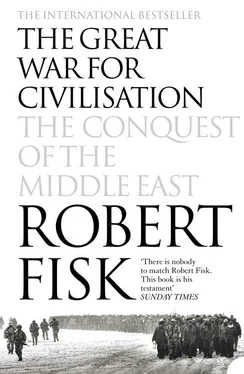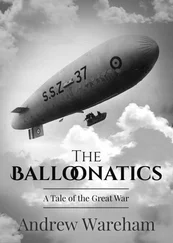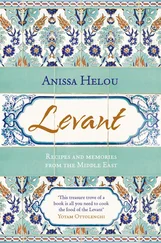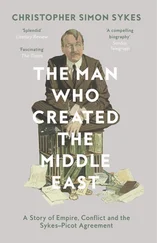This was incendiary material. Here was Entezam – who only a few weeks earlier was boasting to me about the ‘middle-class’ nature of the revolution – discussing Iran’s security fears with the CIA; not only revealing his own intelligence information but expressing his exasperation with the most revered Islamic figure in the country for endangering that security. In June, Entezam was asking for US information on ‘Iraqi intentions towards Iran’. By this time, there had been frequent artillery exchanges across the Iran – Iraq border, and the US embassy chargé, ‘after remarking that he was not sure who cast the first stone … speculated on the possibility of the Iraqis attempting to create a “prickly hedge” along Iraq’s border with Iran à la one-time British policy on the Durand Line.’
Bruce Laingen, the American chargé, held further meetings with Entezam and within weeks Entezam – known in the US cable traffic by the rather unromantic code-name ‘SD/PLOD/1’ – was receiving direct visits from senior CIA officials. When he became an Iranian ambassador based in Sweden, Entezam was given an intelligence briefing by CIA agent George Cave, who was later to be a leading figure in the 1985–86 Contra scandal. In Tehran there had been further meetings between the CIA and Bazargan, Entezam and Ibrahim Yazdi, the Iranian foreign minister. Cave himself later visited Tehran and agreed with Entezam that there should be briefings – again, I quote the reconstructed documents – ‘every three to six months, with spot information being passed if particularly important. Entezam asked if there could be a contact in Tehran to exchange information on a regular basis. (Note: Cave was introduced as senior briefing officer from intelligence community. Term CIA was never used.)’
When the American embassy in Tehran was invaded after the Shah had been admitted to the United States, the explosive nature of Entezam’s CIA contacts was revealed in the shredded files that the young Iranian men and women were painstakingly pasting back together. Bazargan and Yazdi were discredited and Entezam arrested and put on trial for treason, barely escaping execution when he was given a life sentence in 1981. Entezam always maintained that he was a true revolutionary merely seeking to maintain relations with the Americans in the interests of Iran.
Massoumeh Ebtekar, among the principal ‘invaders’ of the embassy, saw it quite differently. ‘ The CIA apparently believedthat it could manipulate any revolution or political establishment if it could successfully infiltrate its top ranks early on,’ she was to write. ‘In Iran, the agency was particularly intent on doing so. After all, it had plenty of past experience.’ According to Ebtekar, the ‘students of the Imam’ also found counterfeit identity cards and passports for CIA agents in the embassy, including stamps and seals for airport entry and exit visas in Europe and Asia, as well as 1,000 false Ghanaian passports. Other documents dealt with pro-monarchists ‘who were involved in terror killings’. But if another ‘Operation Ajax’ was ever considered in Washington, it surely died in November 1979.
Our own life in those early weeks of the Islamic Republic was not without its humour. As long as Iran kept to the system of free visas operating under the Shah, we could enter and leave Iran as often as we wished – I even flew to Dublin for a weekend break, leaving Tehran on a Friday morning, returning by Monday night – and only slowly did the regime’s new laws affect us. For months, at the Intercontinental Hotel in Tehran – later renamed Laleh, ‘Rose’, after the symbol of revolution – we could still drink vodka with blinis. But the ban on alcohol was quickly imposed. I still possess a memorable note from the Tehran hotel management pushed under my door on 21 March 1979. ‘Due to the limited supply of alcoholic beverages in the country and the unexpected [sic] in the mark-ups in the price of these itesm [ sic ],’ it said, ‘the management has no alternative but to a 20% increase. Thank you.’ Not long afterwards, a revolutionary komiteh invited journalists to watch the destruction of the remaining stocks of Satanic alcohol in the hotel’s cellars. As film cameras whirred, gunmen hurled Pol Roger champagne bottles into the bottom of the empty swimming pool, along with the finest French wines and upended boxes of Gordon’s gin. From the two-foot-deep field of glass at the bottom of the pool, the stench of alcohol permeated the hotel for days afterwards. A South Korean restaurant continued to elude the authorities, its staff burying cases of German beer in their garden. Clients had to wait for ten minutes until each beer can arrived at their table covered in earth.
And the middle classes so beloved of Entezam continued to entertain. One evening I was invited to dinner at a villa of marble stone floors and tasteless pseudo-baroque paintings in north Tehran where a young couple entertained several Iranian writers and myself with poetry-reading and a meal of pre-revolutionary abundance, along with obligatory glasses of home-made vodka. I was intrigued by the attractive hostess because she was rumoured to have been one of the Shah’s last mistresses. Whenever the Shah wished to make love to a woman, it was said, she would be invited to a side door of his palace, would spend two hours with him in a discreet salon and – before leaving – would be presented with a Labrador puppy dog as a token of the King of Kings’ affection. Given the grotesque reputation of the man, I often wondered why Tehran was not populated with hundreds of stray Labradors. I had dismissed all such thoughts when the dinner ended and I was saying goodbye to my hosts. It was at this moment that the kitchen door burst open and something vast and furry catapulted into me, to the consternation of the couple. I looked up to see the friendly face of a golden Labrador, looking at me as if it had spent all evening waiting to make my acquaintance.
Just what life for the Shah was like emerged when the new information ministry, rejoicing in the name of the ‘Ministry for Islamic Guidance’, asked us to take a look at the Niavaran Palace in north Tehran. If Richard the Third really did offer his kingdom for a horse, then the Shah of Iran paid for his freedom with a clutch of palaces, a heap of priceless Persian carpets, a Marc Chagall sketch, a 22-carat gold seventeenth-century model of a Chinese slave ship, a two-storey library, a set of pianos that would send a music college into ecstasy and two solid gold telephones.
Standing beneath the silver birches on the windy lawn of the Niavaran, an Iranian government official made one of the more historic sales of the century sound like nothing but a momentary hiccup in the progress of the revolution – which was what it would turn out to be. ‘We will put the contents up for auction,’ he announced. ‘Then the palaces will be turned into museums.’ So we were left to watch a turbaned mullah and two men armed with G-3 automatic rifles as they pulled and tugged a 30-foot-square handwoven crimson and gold Isfahan rug across the inlaid wooden floor of the Shah’s drawing room. Oriental princesses, plumed birds and exotic beasts of prey were tangled through the arabesque embroideries and each carpet was neatly tagged with an inventory number: proof that while the revolution might have its ups and downs, Iran’s new rulers had a head for efficiency. In the previous few weeks, the Shah’s carpets had reportedly raised $15 million.
One had to admit that the Shah had the most dreadful taste in furniture. French baroque chairs nestled against glass and steel tables while the most grotesque urns – mutated by some silversmith’s black magic into ugly peahens – sat upon desks of delicately carved and mosaic-encrusted wood. Walls of cut glass with a powdering of dust upon them suggested a British cinema of the 1930s. This was how the Shah and his wife left their palace in January 1979 when they set off for a ‘holiday’ and eternal exile.
Читать дальше












